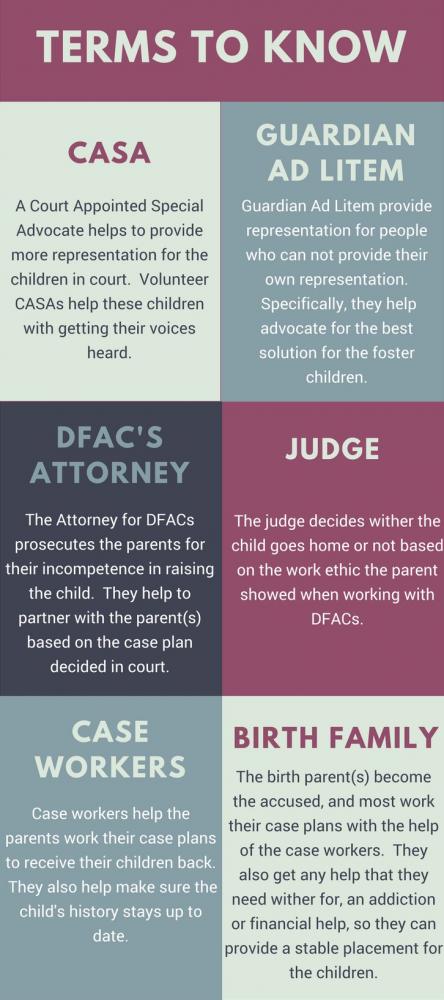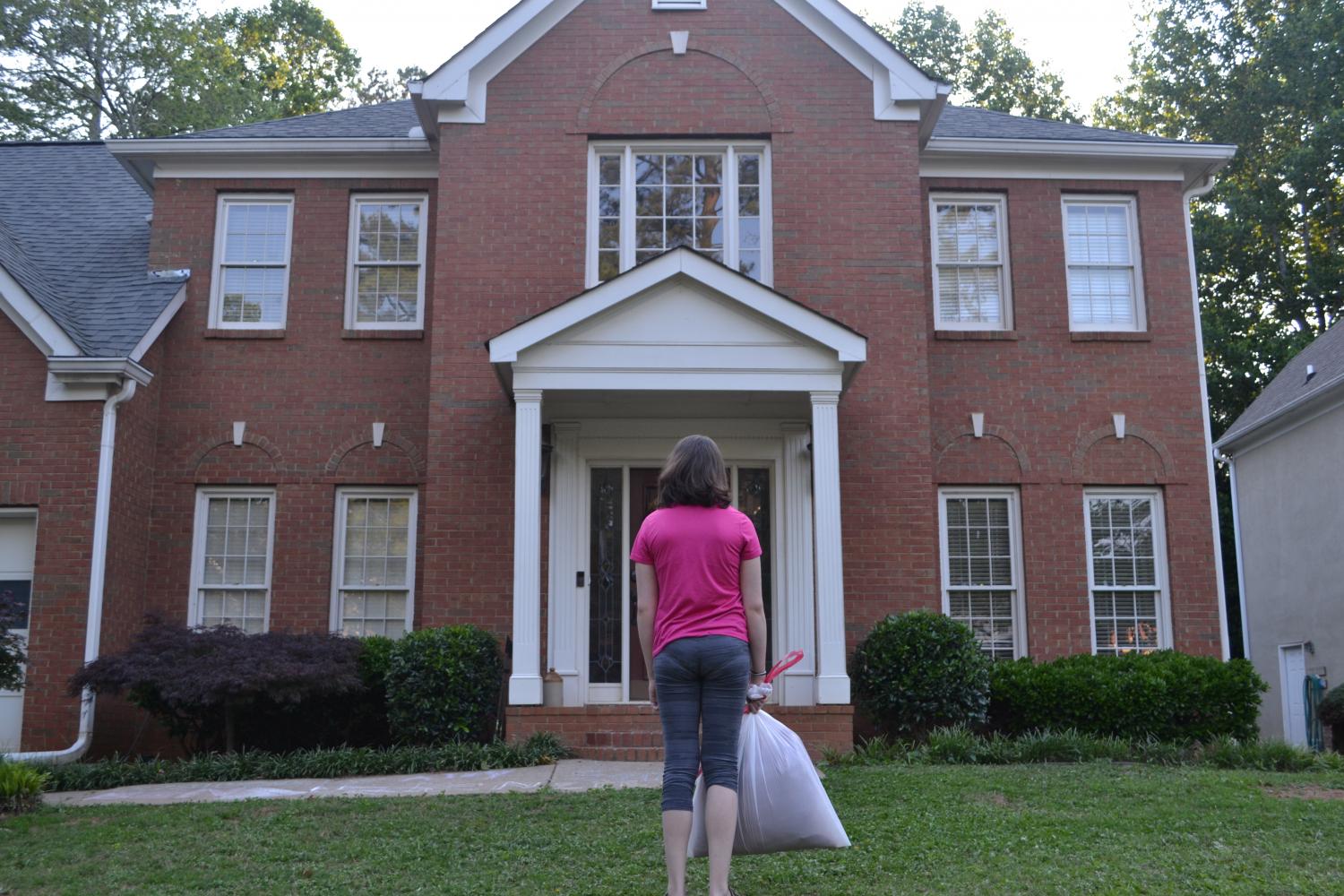Your donation will support the student journalists of North Cobb High School. Your contribution will allow us to purchase equipment and cover our annual website hosting costs.
The truth about foster care
May 19, 2017
After leaving a family behind, foster kids turn to foster families to provide a home during a huge life change. Through foster families, foster care keeps kids in horrible living situations safe.
These volunteer families care for children until they either go back to their family or relative, obtain availability for adoption, or age out of the system. In these scenarios, only a rare selection of people get the scenario they long for. Instead of helping the kids, foster care often adds to the extensive trauma. One can only hope for the kids to never remember the trauma, but almost none escape without any emotional toll.
Children in foster care come into care work through past trauma, often leaving their birthplaces despite their past experiences in the homes of their biological families. They often experience all sorts of different traumas including physical, mental, or emotional abuse. Despite these horrible tragedies, these kids see their parents as their actual parents, so moving to an entirely different family hurts them, just as it would anyone else torn from their family.
Despite what happened in the past, these children grow up knowing their families all their lives. When people hear about these horrible conditions they lived in, one needs to bear in mind that they did not live like that all the time. For example, the moments where the family actually gets to sit down and eat together stands as the most memorable for these kids.
Foster parents provide a safe and loving home for these kids after experiencing unimaginable traumas. They help them work through what they feel, as well as how to move past the shock. Kids need this sense of stability and comfort, especially during such a detrimental time.
Before taking on a child to foster, foster parents go through training for the ability to care for these children. They take training classes regarding the traumatic events the kids face, how to handle certain situations, and how to handle schooling as well. They need to understand what forms they need to provide the administration and they learn an extensive amount of information on how to deal with the kids coming into their care.
When kids come into foster care, they often react in different ways, but all of them experienced trauma at some point in the past. Foster parents learn how to deal with a child kicking and screaming at them, which often happens when they first came into care. Kids may show these signs after a traumatizing event or show no violence at all. Either way, foster parents need to know how to deal with both.
2015 Foster Care Statistics by Courtney
The training offered to the foster parents often does a poor job explaining all the trauma these kids experienced growing up. Foster parents need to recognize what event triggered the child back to a distressing time. In order to tell these signs, they need the education, which often comes in the form of different organizations that host events with experienced speakers.
Foster parents help children work through these issues, and provide a huge support system for them, especially because kids get lost in the system so easily.
Besides just helping the child, these foster parents also help the parents of the kids in care. The goal when a kid goes into care includes reunification with their biological parents. Foster parents work with the biological parents in several different ways to aid reunification.
Foster parent Dana Peterson always plans on providing a safe place, even after reunification for both the kids and their parents. Peterson considers this her number one goal.
“The first and foremost thing is to be a safe place for a child to go to 24/7,” Peterson said.
Making sure that the children feel safe makes the move into foster care much easier for these kids. Foster parents also help advocate for the foster children in their home. This requires them to work with case workers, doctors, and the birth family if reunification becomes a possible option. Peterson explains how she does this for every child that comes through her house.
While advocating for the child, foster parents interact with several different groups of people. They partner with not only the case workers, but also the birth family, medical professionals, Court Appointed Special Advocates (CASAs), school officials, the Division of Family and Children Services’ (DFACS) attorney, guardian ad litem, and the judge. Foster parents help the caseworkers arrange visitation with the birth family at a time that works best for everyone’s schedule. They help provide accurate information on the child in court for the guardian ad litem, judge and DFACS attorney. These foster parents also speak up for the kids in their school.
“I feel like it is a very good system, because they make sure the kids are protected.” sophomore Nina Shack said.
 Courtney Moody
Courtney Moody
Foster parents act like an actual parent to these children by providing protection for these kids. They do far more than regular parents, considering the partnerships with the child, and help the kids overcome the trauma they faced. AdoptUSKids gives information on the trauma foster children face, so when people go to adopt them, they receive more information on their future child’s history. In their research, AdoptUSKids goes through and explains how trauma affects children and offers ways for parents to help their child overcome trauma.
Foster parents help these children by keeping the records about the child’s history. This information includes things such as medical history, school records, and anything else pertaining to the child. Making sure these records do not get lost remains imperative for everyone involved in the child’s life.
Out of all the partnerships, helping the CASA provides the foster kid with even more representation in court. Volunteer CASAs help the child’s voice stand out in the courtroom. The CASA comes out to the foster parent’s house to see the children and learn more about them. Giving information to the CASA helps them advocate for the child even better. Foster parents give their insider knowledge to the CASA, making sure that everything the child went through becomes openly known in court. Information on becoming a CASA on the CASA website helps people get connected.
While the CASA advocates for the child in court, the guardian ad litem investigates which solutions most benefit the child. They partner with the foster parents to learn more about the child, considering the foster parents spend the most time with them. Information about the child needs to make its way to both the CASA and guardian ad litem, so that the plan chosen for the family works in the best interest of the child. Different types of case plans include reunification with birth family, independent living program for teenagers, emancipation for teens to take care of themselves, and adoption if reunification does not work.
When adoption no longer stands as a possibility for teenagers, they turn to independent living programs and emancipation. Every foster parent’s number one goal includes reunification of the children with their birth family.
Foster parents work in each county for the local DFACS there. DFACS partners with different organizations that help the foster parents receive the hours. One requirement for foster parents includes training hours to stay educated about the kids coming into care. These hours help the foster parents grow and learn more about these children. Peterson prefers organizations, such as Foster4 Love, that host events with more knowledgeable speakers about the traumas the kids faced while at their birth family’s home.
“The idea is that you give them [foster parents] something that helps the kids,” Peterson said.
Foster parents help these kids in so many different ways, but rarely receive the credit. Foster kids experience trauma just from entering care, but foster parents help them through this difficult season of life, even helping them after they leave care. Visit AdoptUSKids for more information about fostering and adoption.
